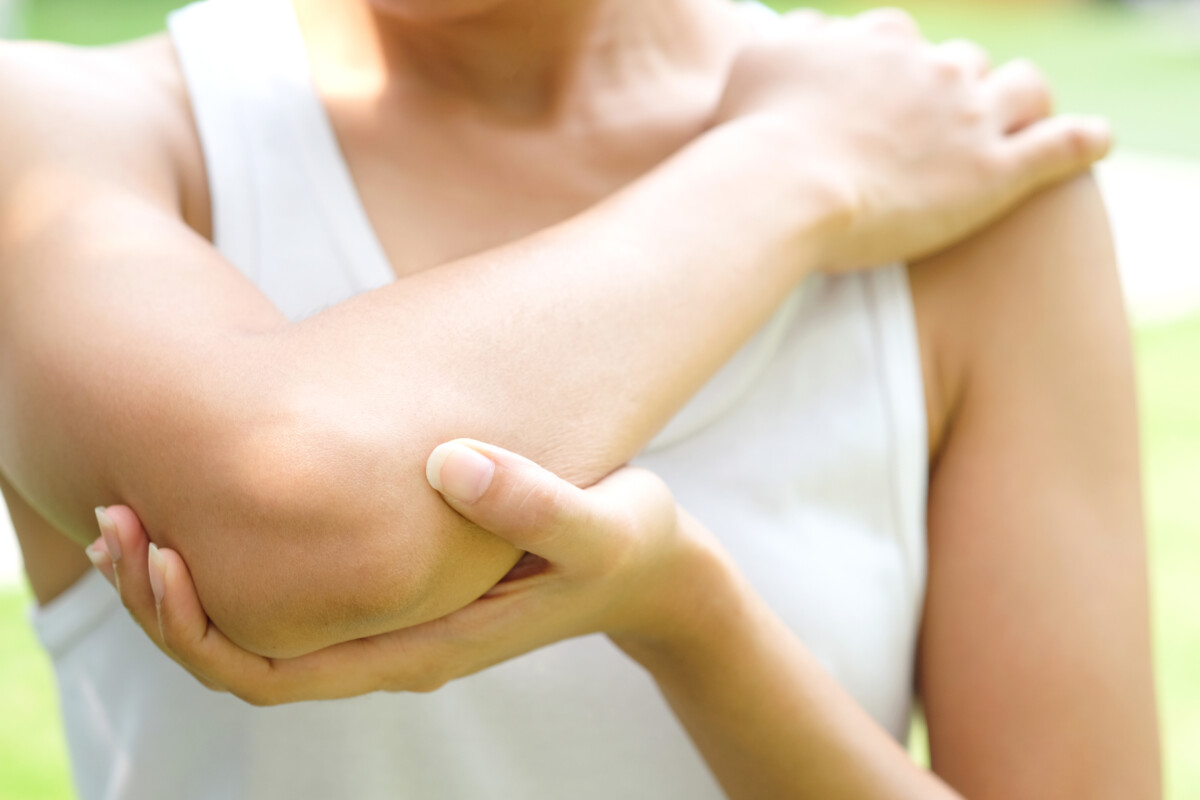Why is my Elbow Hurting?

The words “tennis elbow” bring tennis playing to mind, but that is far from the only cause of this painful condition. If your elbow is hurting, it could be tennis elbow, even if you’ve never swung a racket.
What is Tennis Elbow?
Tennis elbow is an over-use injury that happens to the outside of the elbow. It is usually caused by putting too much strain on the elbow tendons and forearm muscles, particularly when playing sport such as tennis or golf. Repetitive work such as house-painting, carpentry or even computer work can also cause it. Tennis elbow – Causes – NHS (www.nhs.uk)
People between the ages of 35 and 54 are more likely to experience tennis elbow, but it can happen to anyone.
Symptoms of Tennis Elbow
If you have tennis elbow, you may experience the following symptoms:
- Soreness and tenderness on the outside of your elbow and upper forearm
- Swelling around the outside of your elbow and upper forearm
- Weakness and stiffness in your forearm
- Pain with certain activities such as playing certain sports, shaking hands or turning doorknobs.
Treatment of Tennis Elbow
Ways to treat tennis elbow include taking a break from activities that cause you pain (Rest), ice therapy (ice), compression and elevation. This is known as the “RICE” method of treatment. Painkillers and anti-inflammatory medications are also useful. It’s important to avoid lifting heavy objects with your hands facing down when you have tennis elbow. At work, make sure to arrange your workspace properly and use tools that don’t require a lot of force.
Tennis elbow usually goes away on its own within one year. In some cases, however, the condition doesn’t get better on its own. If the pain does not go away after a couple weeks, then you need to talk to a doctor about other treatments. These may include corticosteroid injections, platelet-rich plasma injections, physical therapy or surgery (which is very rare).
Prevention of Tennis Elbow
Tennis elbow can be prevented with the proper care. Here are some steps you can take to avoid getting this painful condition:
- Avoid putting too much strain on the muscles around your elbow.
- Change positions regularly when putting strain on your forearm and elbow.
- Do stretches and exercises to strengthen the forearm.
- Take regular activity breaks and rests.
- Have your equipment checked for proper fit. If necessary, switch to a stiffer or looser-strung racquet or use an oversized racquet with a smaller head.
RMH Orthopedics: (765) 932-7063
